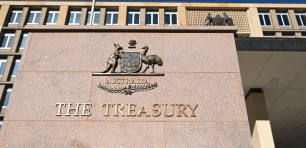
Source: Pexels/Ketut Subiyanto.
With just over a month to go until the end of this financial year, many companies have experienced changed business conditions like no other time in recent history.
For many, their end-of-year figures may include government pandemic or disaster recovery grants, JobKeeper payments, and a possible period of insolvent trading when directors were covered by the temporary safe harbour relief (which meant directors were immune from prosecution or insolvency action due to the pandemic). These businesses may grapple with how to treat these payments when it comes to tax time.
For businesses that remained on JobKeeper, all monthly business declarations for JobKeeper fortnights should have been completed by mid-April to receive final JobKeeper payments.
According to the ATO, all JobKeeper payments are assessable as ordinary income of each business eligible to receive the payments and should be declared as income in tax returns. The normal rules for deductibility apply for the amounts your business pays to its employees, where the JobKeeper payment subsidises those amounts.
There has also been changes to how businesses can write off assets. For example, in last year’s budget, the federal government extended the instant asset write-off scheme.
For assets purchased by December 31, 2020, and first used between March 12 2020 and June 30, 2021, the instant asset write-off threshold amount increased to $150,000 and the scheme was extended to businesses with an aggregated turnover of less than $500 million. The threshold amount is up from $30,000, and the government previously capped business turnover at $50 million.
The instant asset write-off scheme has now effectively been replaced by temporary full expensing, where businesses with a turnover of less than $5 billion can immediately deduct the business portion of the cost of eligible new depreciating assets. With a 12-month extension announced in Tuesday’s budget, this can now be utilised for assets first used or installed between October 6, 2020, and June 30, 2023.
The devil is in the detail, so it is worth seeking professional advice to check if a purchase is eligible, as there are some exceptions, as well as simplified depreciation rules for small businesses.
Coupled with these tax changes, each state government has also offered COVID-led tax relief for employers, from payroll tax relief to small business grants and loans, which will need addressing when it comes to tax time. Some states, like Western Australia, have also waived licence fees and refunded fees already paid.
If your business has been a recipient of a grant, JobKeeper or other payment for COVID-19, then you must retain all your records and provide them, along with your standard assessable income details, to your accountant.
Given the likelihood many other businesses will need professional help, you should aim to have as much of it prepared as possible in advance.
Below is a handy list of tasks all SMEs can tick off before June 30:
- Prepare your profit and loss statement outlining your income and expenses. For tax purposes, JobKeeper payments should be considered as income.
- Undertake a stocktake if your business buys and sells products. Your records need to show a list describing each article of stock on hand and its value; who did the stocktake; how and when it was done; and who valued the stock and the basis of the valuation.
- Keep records of depreciating assets for as long as you have the asset, and then another five years after you dispose of the asset. COVID-19 has meant that some SMEs can also fast-track depreciation, so it is worth speaking to a financial adviser to see if your business qualifies. During the 2019–20 and 2020–21 income years, eligible businesses may be able to deduct the cost of new depreciating assets at an accelerated rate using the backing business investment – accelerated depreciation rules.
- Prepare a summary of your debtors and creditors. Some businesses may have taken advantage of the temporary safe harbour legislation, which could add a layer of complexity, best managed by a professional financial adviser. When preparing this list, take into account any creditors’ agreements or debt repayment plans in place if you have undertaken a restructure or have a post-pandemic recovery plan underway.
- Make sure you have met all your superannuation obligations regarding payments to employee super accounts.
- Finalise Single Touch Payroll income statements and fringe benefits tax records, and GST reporting.
- Make scans or digital records of all your paper-based documents, collate along with online records and make sure you back up all files.
If there was any year to consider using the service of a professional tax or financial adviser, then the 2020-21 tax year is definitely the one.
If your books don’t look as healthy as you would like and you’re worried about your ability to remain solvent into the future, it’s also the right time to approach an expert to guide you through the best way forward.
Handpicked for you

Budget 2021: Plenty for SMEs in big-spending, election budget bonanza



COMMENTS
SmartCompany is committed to hosting lively discussions. Help us keep the conversation useful, interesting and welcoming. We aim to publish comments quickly in the interest of promoting robust conversation, but we’re a small team and we deploy filters to protect against legal risk. Occasionally your comment may be held up while it is being reviewed, but we’re working as fast as we can to keep the conversation rolling.
The SmartCompany comment section is members-only content. Please subscribe to leave a comment.
The SmartCompany comment section is members-only content. Please login to leave a comment.